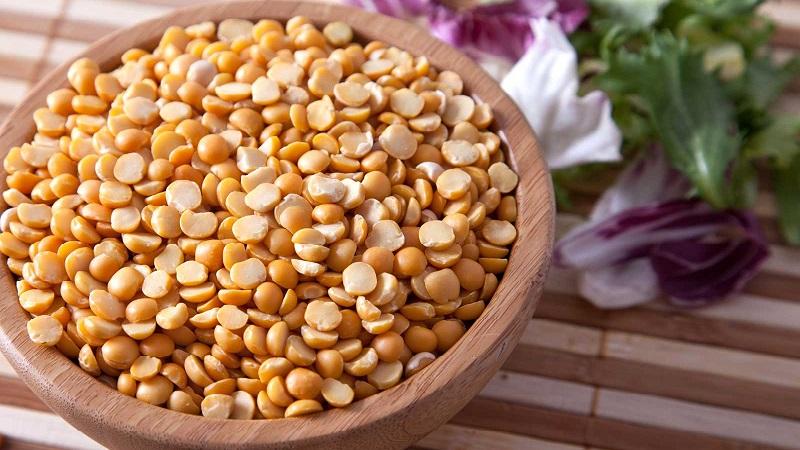What are useful and harmful peas for humans
Many people like to feast on sweet and tender fresh green peas. To this end, gardeners grow it on their plots. But this vegetable is used not only in its raw form. Peas are canned, frozen and dried. Let's figure out what the benefits and harms of peas are for human health, and in what quantities this product can be consumed.
The content of the article
Useful properties of peas
Among all vegetables, peas with lentils occupy a leading position in protein content... The amino acids in this vegetable are similar to animal proteins. This makes peas an indispensable staple in the diet of vegetarians and people who observe religious fasts during periods of time when meat is not allowed.

What vitamins and minerals are in peas:
| Peas contain | Action on the body |
| Vitamins B, B2, PP, A, C, E, H, pyridoxine (B6) | Vitamins vital for the human body. To get the maximum effect, it is best not to heat the peas.
Pyridoxine provides the breakdown and synthesis of essential amino acids. With its lack, convulsions and skin dermatitis may occur. |
| Selenium, iron, potassium, calcium, fluorine, manganese, sulfur, zinc, etc. | Selenium protects the body from heavy radioactive metals. Iron increases blood hemoglobin levels. Calcium nourishes bone tissue. |
Regular consumption of peas strengthens the cardiovascular system... This reduces the risk of heart attack and hypertension.
Important! The beneficial substances contained in peas accelerate the metabolic rate in the human body. And lipid, and carbohydrate, and protein.
How to use
Peas are traditionally consumed in four forms:
- fresh;
- frozen;
- canned;
- dried.
In Russia, fresh peas are grown from July to August..
Frozen peas are available all year round in almost any store.... It is boiled, fried, stewed or baked. It is eaten both as an independent side dish and as an addition to other dishes.
Why is boiled peas useful? It is high in fiber and fiber... This means that it is good for digestion. Besides, decoction of peas is a good antiseptic. It is used as an auxiliary folk remedy for skin diseases. Boiled peas are also good for heartburn.
Not only fresh and dry peas or pea broth are good, but also pea flour... It is made by grinding dried peas. One tablespoon of flour per day, added to another meal, will improve food processing and relieve constipation. Two teaspoons of flour after meals - This recipe will help relieve headaches. You can also use pea flour to treat cuts and wounds.

With diabetes
Fresh peas have a glycemic index of 50 units. This is the average GI. Canned peas have about 45. But split dry peas are considered a product with a low glycemic index. It is equal to 25. Therefore it is allowed to use peas for type 2 diabetes mellitus.
Note. The glycemic index shows at what rate the food eaten is converted into glucose and absorbed by the human body.
The product has one more property useful for diabetics. When cooked, peas can lower the glycemic index of foodsprepared along with it.
In cosmetology
The beneficial properties of peas are also used in cosmetology. Make of it:
- masks that improve complexion and reduce unwanted skin pigmentation;
- mixtures for the prevention of acne and facial swelling.
Why peas are useful in weight loss diets
Those looking to lose weight should pay attention to this dietary legume product.... Its fresh calorie content is only 55 calories per 100 g. If the peas are boiled, its calorie content will increase to 60 kcal. But in dried peas, the calorie content is high: there are about 300 calories per 100 g. Therefore, if you are overweight, you should be wary of dried peas.
Interesting on the topic:
What are the varieties of peas - an overview of varieties with photos and detailed descriptions
When peas are bad
Both raw and processed peas cause increased gas production... Therefore, in large quantities, it has contraindications.
Peas can cause allergies... For those who previously had a tendency to allergic reactions of the body, it is better to bypass this product.
For whom peas are not recommended:
- pregnant women;
- To old people;
- people suffering from gout;
- patients in the period of exacerbation of diseases of the stomach and intestines.

Pea consumption rates
How many peas are recommended to eat? In order to provide the body with everything useful that is in peas, it is advisable to eat about 100-150 g of this product per day... Better to use fresh or frozen peas. Regular consumption of such a dose will allow you to get rid of toxins, enrich your diet with micro- and macroelements, and provide the body with easily digestible vegetable protein.
Conclusion
Peas are a great source of protein. Its biological characteristics make it similar to meat protein. But at the same time, it is much easier for the body to absorb. > The beneficial properties of green peas for the body are undeniable, they contain many vitamins and nutrients. In addition, it is low in calories and low on the glycemic index. All this makes peas an indispensable product for people who monitor their health, including those who want to lose weight.
Even if you are not attracted by the usefulness of peas, still use it in your menu, it is delicious as an independent product, as well as in many meats and dishes and salads.